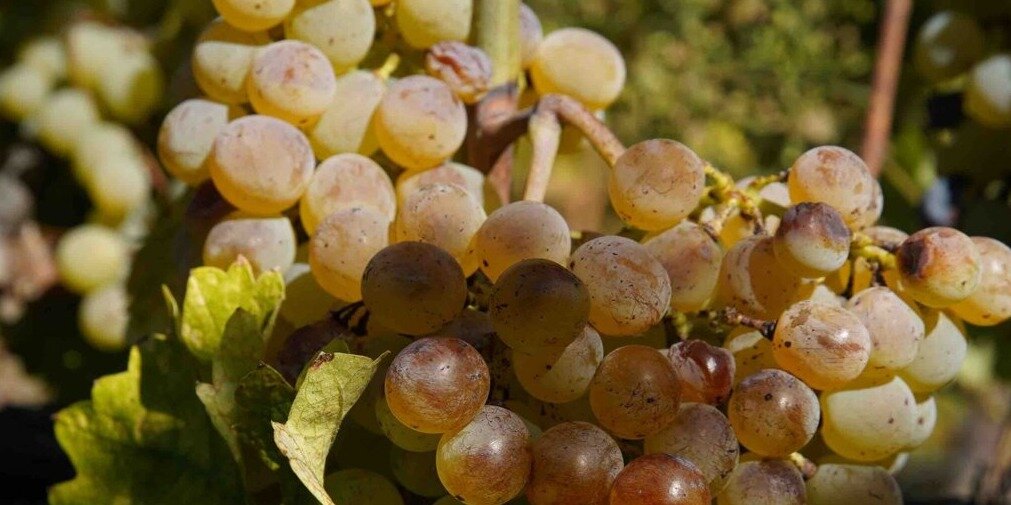Mount Etna, the tallest active volcano in Europe, is a representation of tenacity and change. A grape that reflects this dichotomy is found on its rocky slopes, which are covered in a patchwork of vineyards: Carricante. Cultivated in Sicily for centuries, this old white cultivar provides a wonderful representation of its volcanic terroir. Carricante captures the spirit of a place sculpted by fire and time, from its flavours full of minerals to its lively acidity.

Carricante’s History: A Sicilian Treasure
For more than a thousand years, the Sicilian grape known as Carricante has been grown there. The Italian term caricare, which means “to load,” is the source of its name and alludes to the grape’s innately high yield when produced in ideal circumstances. Carricante is not commonly planted in Sicily, despite its historical origins. Rather, the volcanic slopes of Mount Etna, especially the eastern and southeast sides of the volcano, have become its spiritual home.
Sicilian farmers had known for years that Carricante could flourish in Mount Etna’s particular conditions. They blended it with other indigenous types to produce wines that balanced freshness and richness because they valued its crisp acidity and fresh character. Only a few producers are preserving Carricante’s legacy, though, since foreign kinds are becoming increasingly popular.
Mount Etna’s Volcanic Terrain
Mount Etna’s volcanic nature is intricately entwined with the distinctive flavour of Carricante. The area’s temperature, altitude, and soil makeup combine to produce a terroir that is unmatched worldwide.
Centuries of volcanic activity have created the lava flows, pumice, ash, and basalt that makeup Mount Etna’s soils. Minerals like potassium, magnesium, and iron are abundant in these soils and add to the wine’s nuanced flavours. Because volcanic soil is porous and has good drainage, plants must develop deep roots to obtain nutrients and water. Concentrated, distinctive grapes are the product of this struggle.
Elevated Levels
Carricante vines are grown at elevations between 400 and 1,200 metres above sea level on Mount Etna’s vineyards, which are among the highest in Europe. Even in Sicily’s warm environment, the high altitude produces milder temperatures, which maintain the grape’s inherent acidity and intensify its aromatic flavour.
Another important consideration is the notable temperature differential between Mount Etna’s daylight and overnight hours. Cool nights ensure the development of rich flavours and brilliant acidity by slowing down the ripening process, while warm days allow the grapes to ripen completely.
Carricante’s Modern Renaissance
Thanks to a new generation of winemakers committed to highlighting the potential of Mount Etna’s indigenous varietals, Carricante has seen a renaissance in the last 20 years. To protect Mount Etna’s fragile nature, pioneers like Giuseppe Benanti and wineries like Planeta and Passopisciaro have made investments in reviving historic vines and adopting sustainable techniques.
Their efforts have been acknowledged. With wines gaining praise from critics and making their way into the lists of the world’s leading sommeliers and collectors, Carricante is now regarded as one of Italy’s most fascinating white varieties.
In conclusion, a taste of the soul of Sicily
More than just a grape, Carricante is a representation of Sicily’s past, its volcanic terrain, and its people’s tenacity. The essence of Mount Etna is captured in a glass with each taste, taking the drinker on a voyage through terroir and time.
Carricante allows you to discover the flavours of Sicily’s volcanic heart, regardless of your level of wine expertise. Pour yourself a glass and allow this exceptional wine to take you to the Mount Etna slopes, where each drop combines nature and tradition.